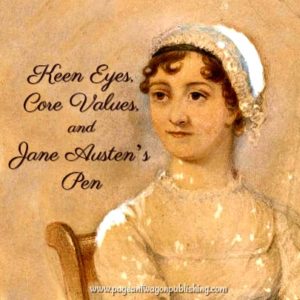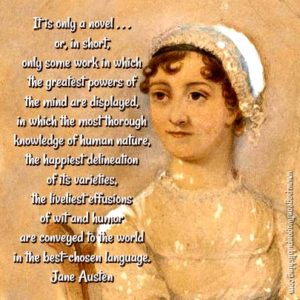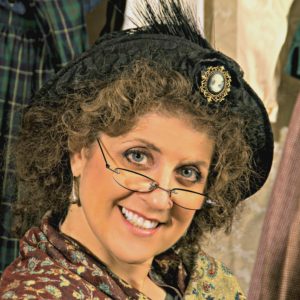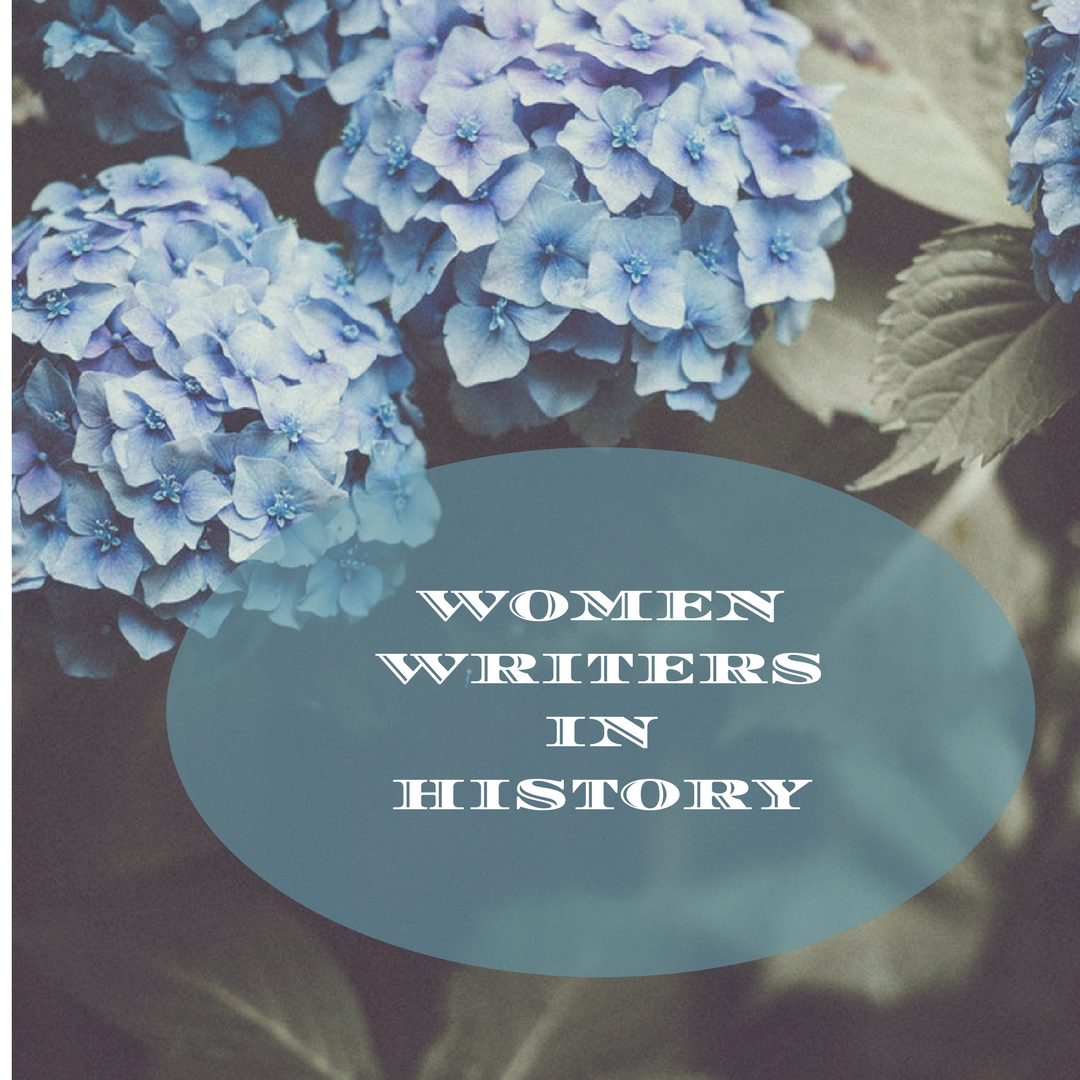 It is only a novel . . . or, in short, only some work in which the greatest powers of the mind are displayed, in which the most thorough knowledge of human nature, the happiest delineation of its varieties, the liveliest effusions of wit and humor are conveyed to the world in the best-chosen language.
It is only a novel . . . or, in short, only some work in which the greatest powers of the mind are displayed, in which the most thorough knowledge of human nature, the happiest delineation of its varieties, the liveliest effusions of wit and humor are conveyed to the world in the best-chosen language.
Jane Austen
Northanger Abbey
Jane Austen, not yet twenty years of age in the late 18th century, penned the novel, Northanger Abbey. The story explored how easily a young mind can be filled with nonsense and ignoble values through the reading of sensationalistic novels. Void of true substance and moral life values, books and stories like this have always been with us. Jane read them—pop literature—and learned early the emptiness of such works. Northanger Abbey’s heroine, Catherine Moreland, walks out in fiction the non-fiction life lessons Jane discovered in her youth regarding the power and value of literature in forming the mind and character.
Jane’s keen eye to identify the noble and ridiculous in her sphere of society and the culture of her day was a foundational asset to her writing life, and the ultimate contribution she made to classic literature. How was she groomed to hold this esteemed place among women writers in the world of Western prose?
Born in 1775, in Steventon, Hampshire in the English countryside, her lively Christian home of six brothers and one older sister filled her youth with creative stimulation and activity. Informed by academic and biblical faith habits, honed under the tutelage of her father, the parish rector of Steventon and headmaster of a boys school, her gifts for clever insight, wit, and writing were enjoyed and encouraged by her family. Many a night found them gathered to hear her read from one of her essays or short stories, sparking approving laughter and engaging conversation.
Eventually, with the aid of her older brother Henry, her novel, Sense and Sensibility, was published under an anonymous byline to national acclaim. Pride and Prejudice followed, surpassing S&S as her most famous work.
 In her short life, Jane left six complete novels and was eleven chapters into her final work at the time of her death at age 42 in 1817. Modern doctors, reviewing the scant clues in her letters and journals detailing the symptoms of her debilitating illness have pointed to Addison’s disease as the culprit. Even so, the legacy of her small body of work to contemporary women writers is easy to distill into a handful of tips. The above quote from Northanger Abbey lays the foundation of her work and best practices for writers today:
In her short life, Jane left six complete novels and was eleven chapters into her final work at the time of her death at age 42 in 1817. Modern doctors, reviewing the scant clues in her letters and journals detailing the symptoms of her debilitating illness have pointed to Addison’s disease as the culprit. Even so, the legacy of her small body of work to contemporary women writers is easy to distill into a handful of tips. The above quote from Northanger Abbey lays the foundation of her work and best practices for writers today:
- Greatest Powers of the Mind Displayed: Write intelligent, truthful words, telling stories well layered in depth and substance.
- Thorough Knowledge of Human Nature: Study the underlying truth in people, the inward workings of the human heart, and the effects and consequences of choices in life.
- Happiest Delineation of Its [human nature] Varieties: Celebrate the most noble core values in humanity that are good, true, and worthy to be praised and imitated.
- Liveliest Effusions of Wit and Humor: Use winsome words to craft entertaining scenes and engaging characters that compellingly illustrate truth.
- Best-Chosen Language: Employ proper technical language skills with a rich vocabulary and word usage.
This tip list was employed in every one of Jane’s classic novels, which also included Emma, Mansfield Park, and Persuasion. Each one gave us a host of memorable, complex characters, timeless storylines involving family relationships and the quest for true love, and idyllic country settings providing an escape and refreshment to mind and heart.
But the most captivating aspect of Jane’s writing for me as a reader and writer, is her ability to present the working out of biblical truth and principles within real life scenes, characters, and plot elements. Without the need to preach, Jane’s works teach God’s Word in her illustrations of life and living within the constraints of her era and society. When I read an Austen novel, I easily recognize Scriptures coming to life through the life of the story. Sticky stories—that entertain and educate me in the way of truth.
It is one of life’s great pleasures to finish a book and feel the satisfaction of not only having read a well-crafted story, but of learning a valuable life lesson about God and human nature.
Steffany Woolsey
A Jane Austen Devotional
Imagine my delight when I came into possession of A Jane Austen Devotional, by Steffany Woolsey. Ms. Woolsey saw in Jane’s work what had always inspired me, both as a Christian and a writer: Jane Austen’s Christian faith core values were the compass steering her stories and character development.
To that end, there are a host of examples to be gleaned from Jane’s novels that, when pondered, clearly illustrate biblical truth. Woolsey discusses this in the Introduction to her devotional:
Austen’s writing is newly illuminated when held up to Scripture. In probing her novels for biblical insights on living and loving, we are reminded of humanity’s innate desire for relationship with the Creator. Through Austen’s varied and colorful characters, we learn not only about true love but meaningful character. We strive for the humility, wisdom, wit, and grace of a Jane Austen protagonist while learning to recognize the superficial vanity and worldliness of so many other characters who concern themselves only with their own gain.
Illustrations of the biblical principles of generosity, unconditional love, vanity, faithfulness appearing religious, kindness, contentment, endurance, self-control, setting emotional boundaries, disciplining children, hope in God, servanthood, wise counsel, jealousy, pure motives, tongue taming, noble actions, gossip, forgiveness, poor judgement, teachable spirit, repentance, and more—over a hundred in total—take the reader of this devotional to deeper places within familiar novels. Each devotional includes a theme title, Scripture, excerpt from one of the novels, and a short essay relating them.
Currently, reading comprehension levels in America are at an all-time low because the threshold for reading and literature is, I believe, set low. Literacy is more than just reading words and sentences. Literacy is being able to think critically about what has been read and relate it to the world around you. Reading deep requires approaching each book like a detective seeking clues to discover the hidden substance tucked between the lines, scenes, characters, and plot layers. As I set out upon the journey with the protagonist of a story, I want to grow with them. I want the time I invest in a story to move me closer to truth. God’s truth comprehended.
Jane Austen intuitively wrote her stories layered with eternal truths regarding the human heart. Her books aren’t listed in bookstores on the Christian fiction shelves. She didn’t write Christian fiction, manipulating a storyline to teach some sort of Bible lesson. She just wrote true to the biblical worldview within which she was raised, within the historical time, society, and culture she lived.
When we write what’s true to our core values, employing the highest levels of literary skill and storytelling prowess, like Jane Austen, our tales become pregnant with the potential of a timeless classic.
Explore the following journal prompts to discern the compass settings of your core values to better inform your writing:
Journal Prompt: What is the most important underlying principle that informs your thinking and writing—your worldview? List some of the core values in life that are most important to you. What kind of themes do these core values suggest for possible storytelling? How does keenly observing the inner and outer workings of the human heart affect your ability to create believable characters? If something is true—does that mean it is good? Why or why not? How does writing truth, be it good or evil, persuade the mind of others? What is the measure of truth, and judge of good and evil? Why is it necessary to have both represented in a story? How can you layer core value truths within a story using the tools of plot, setting, and characters?
TWEET: #JaneAusten had a secret to writing timeless tales! How core values separate the chaff from the wheat in crafting stories that stick. Click To Tweet
TWEET:#Women Writers in Life and Letters—Keen Eyes, Core Values, and Jane Austen’s Pen Click To Tweet
Reference: A Jane Austen Devotional, by Steffany Woolsey, © 2012 by Thomas Nelson, Inc. Nashville, Tennessee, ARR
Writer-speaker, Kathryn Ross, ignites a love of literature and learning through Pageant Wagon Productions and Publishing. She writes and publishes homeschool enrichment and Christian living books for home, church, and school. Her passion is to equip women and families in developing a Family Literacy Lifestyle, producing readers and thinkers who can engage the world from a biblical worldview. She blogs and podcasts at TheWritersReverie.com and PageantWagonPublishing.com. Connect with Miss Kathy on Facebook.



 We love helping your growing in your writing career.
We love helping your growing in your writing career.

2 Comments
Kathy, what an excellent article about the beauty and truth of the acclaimed Jane Austen and her writings. Her life is an inspiration to all writers, even if they do not write a spot of romance. I’m sharing this article, thank you for your passion for words, Kathy. On the same note, have you read any works by Elizabeth Gaskell? She wrote books such as Mary Barton, North and South, and Cranford, the last two of which have been major BBC films. Gaskell writes in the spirit of Jane Austen, and I lovingly refer to Mrs. Gaskell as the female version of Dickens.
Thanks for your kinds words of praise, Tisha. Jane is a happy topic for me to write on, and YES–Elizabeth Gaskill is coming up in a future article. Her North and South is a favorite–though the book is far more complex than the excellent BBC movie. And Cranford is a favorite, too. I have some fun things to share about her. So blessed to find you a kindred spirit in our love of literary ladies. Appreciate the share!!
Joy!
Kathryn Ross